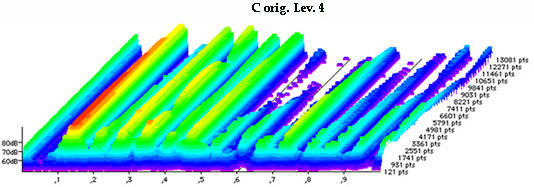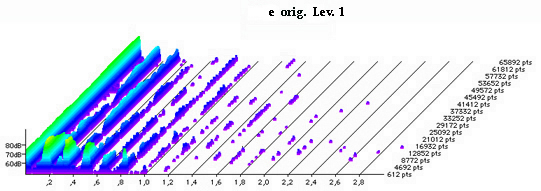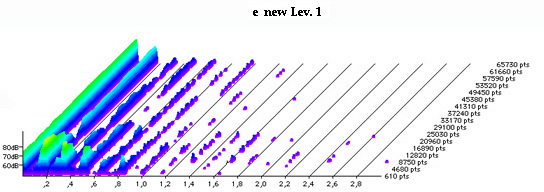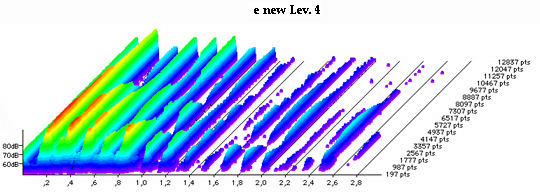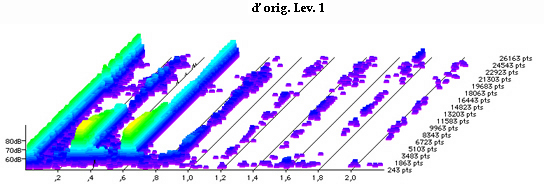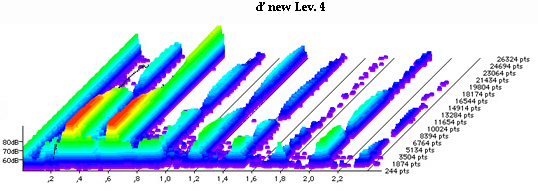REPLICA OF PLEYEL HAMMERS OF THE ROMANTIC PERIOD
 |
|---|
Overview of the first replica of the original hammers of the Pleyel piano 10966 (Paris, 1844), constructed by Flavio Ponzi in 1996-'97. This replica set is wrapped with soft felt with a density of about 0.30 g/cm³, and is quite similar to that of the original hammer set of this piano, which is now housed at the International Museum and Library of Music in Bologne. |
The restoration carried out from 1996 to 1998 by Flavio Ponzi on the Pleyel 10966 piano (now at the Museo Internazionale e Biblioteca della Musica di Bologna) was commissioned in late 1996 by the Library of the Archiginnasio, the administrative representative of the Civico Museo Bibliografico Musicale. The ownership of this splendid instrument has long been attributed to Gioacchino Rossini, but some documents that were found or made public in 1999 by Luigi Verdi (in ‘Rossini in Bologna. Documentary Notes’, Bologne, 2000) would date the purchase by Rossini, on behalf of the Liceo Musicale (Music School) of Bologne, to his visit to Paris from May to September, 1843. (See the Report of the Commission of the Liceo Musicale of Bologne, 13 November 1843, Historical Archives of the City of Bologne, Correspondence 1843, Chapter X, Book 6a).
During the restoration of this piano, and for the first time in Europe, Ponzi also constructed two full replicas of the original hammers of a Pleyel typology piano of that period, including the mechanical parts.
Given the importance of this piano, the conditions of its advanced wear, and the consumption of the felt of the original hammers, F.Ponzi decided not to work on the original hammer set in any way (except for some minor maintenance and repair), because these represent a valuable source of organological information. This decision was supported by the opinion of the late Prof. Vinicio Gai, who was one of the leading experts in the restoration of musical instruments. The original hammer set was therefore placed in a specially built box, and was delivered at the end of the restoration to the aforementioned Museum, together with the two replicated hammers, one of which mounted on the instrument, and the other inside a second case.
The felt of the original hammer set has a density of about 0.30 g/cm³, and contrary to what has been thought for a long time, it does not refer to the patent issued by H.Pape on 10 May 1826 (intended for the felting of piano hammers), which was specifically formed as a mixture of 50% hare hair and 50% rabbit hair, with the addition of goose down and beurre de soie. This felt refers instead to Pape's addition patent, dated November 22, 1834, which provided for the use of "fine wool, such as cachemire, vicuña, or other".
(https://books.google.it/books?id=n6lQAAAAYAAJ&pg=PA22&lpg=PA22&dq=%C3%A9toffe+de+laine+fine:+cachemire,+vigogne+ou+autre.)
It should be noted that few years later (1840), sheep wool felt - which was already in use - was patented in Paris for felting of piano hammers by Eugène-Hippolyte Billion, who also introduced the use of the hydraulic press in the process.
Therefore F.Ponzi used high quality merino wool felt for his piano hammer replicas, in two different densities: of about 0.30 g/cm³ (documented from Pleyel n° 10966, 1844), and 0.38 g/cm³ (documented from the Pleyel n° 11695, 1845), purchased from Rossini, how attested by an autograph letter dated 2 August 1846), as these satisfy the densities found for the Pleyel typology from about the 1840s to 1870s. This type of felt was selected on the bases of research and testing that F.P. had performed since 1991, with the aim being to determine the timbre homogeneity of the materials that were available at the time, compared to the types of felt used in the original historical pianos of Pleyel manufacture.
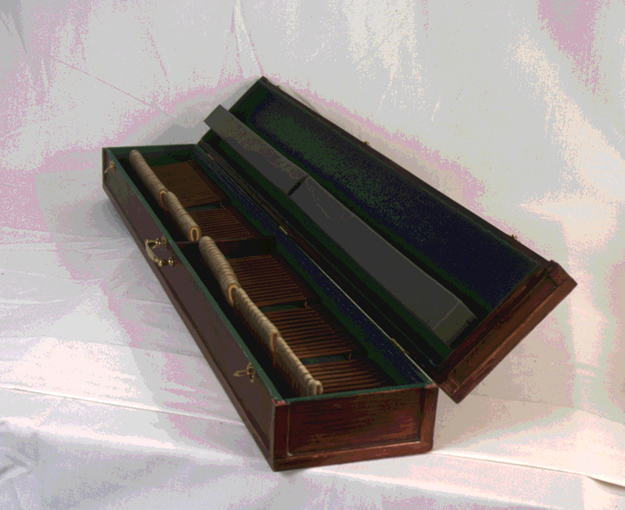 |
The original hammer set of the Pleyel 10966 piano in the special box built to protect it, as now kept at the International Museum and Library of Music in Bologne. |
 |
Irreparable progressive consumption caused by the mechanical stress to the original hammers of the medium-treble compass chord of the Pleyel 10966 piano. |
 |
Overview of the original hammers of the Pleyel 10966 piano, photographed in 1998 in the laboratory studio of F.Ponzi. |
Moreover, in collaboration with Prof. Alessandro Cocchi, Director of the Laboratory of Acoustics of the Department of Engineering, University of Bologne, and with the research team of the Department of Energy, Nuclear Power and Environmental Control (DIENCA), these dual replicas of the Pleyel 10966 piano hammers underwent advanced scientific verification of the results of the restoration, which were later presented at numerous International Congresses of Acoustics and Organology.
In the course of this research, more than 1,500 sound samples were collected and compared, with specific reference to the first replica set of the original hammers of the Pleyel 10966, which was made with sheep felt that had a density of about 0.30 g/m³, and which was thus similar to that of the original felt. These analyses showed a remarkable similarity in the medium-low compass chord of the instrument between the waveforms and the cumulative spectral decay of the replica hammers, compared to the original hammers that had a similar felt density (see below for some examples of cumulative spectral decay and sound samples). This similarity is confirmed by the verification of hearing: a qualitative perception "expert", always crucial and which should never be underestimated in these comparisons.
It should be noted that for this medium-low compass chord the quite substantial layer of residual felt allowed the hammers to reproduce the original sound with sufficient reliability, while when progressing towards the treble chords, the increasing consumption of the apical felt introduced increasingly marked distortion of the tone, giving little value to any comparison.
Finally, numerous sophisticated psycho-acoustic tests were performed in the Main Hall of the Faculty of Engineering of the University of Bologne, which were designed and developed by Prof. Lamberto Tronchin of the DIENCA team. During these tests, a group of ‘experts’ (i.e., students of acoustics, and also pianists) were invited to listen to the playing with the three different sets of hammers as they were alternated on the instrument, which was played by two different performers (Massimiliano Génot and Flavio Ponzi). Pieces were performed from the Romantic music repertoire on the three hammer sets, to allow the participants in the tests to express their open and detailed qualitative evaluation (by filling in anonymous questionnaires) of the relative timbre and dynamic performance of each hammer set.
Photographs of some of the hammers of the first replica of the original hammer set of the Pleyel 10966 piano, currently under the guardianship of the International Museum and Library of Music in Bologne. The three leather underfelts (which are reduced to two from hammer #54), are covered with soft felt with a density of about 0.30 g/cm³, similar to that of the original hammers. It is interesting to note that in this period the refined hammers of the Maison Pleyel showed small but consistent structure modifications in terms of the thickness and number of the underfelts. This was probably derived both from the different styles of the individual craftsmen and from the variable nature of the materials that were available at the time. This was also possibly related to the need to find the optimal balance point between the specific characteristics of the hammers and the performance of each individual instrument. |
||
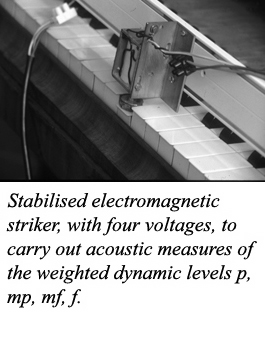 |
||
The hammer-heads are of mahogany, the hammer-shanks of Virginia cedar: how the original ones. |
||
 |
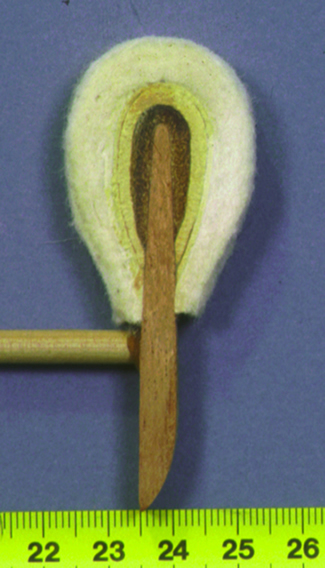 |
 |
Hammer n. 1 |
Hammer n. 13 |
Hammer n. 21 |
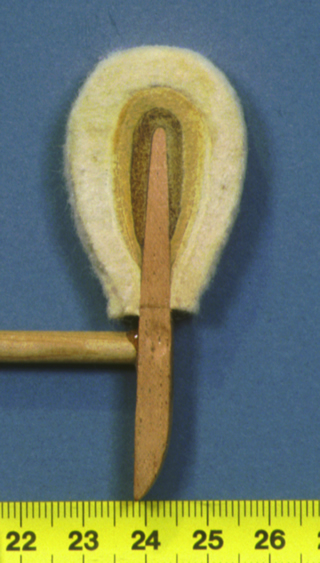 |
 |
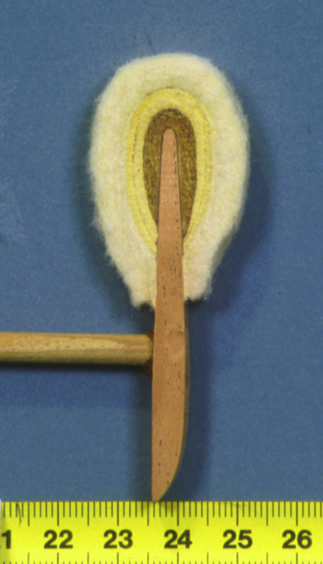 |
Hammer n. 25 |
Hammer n. 33 |
Hammer n. 38
|
 |
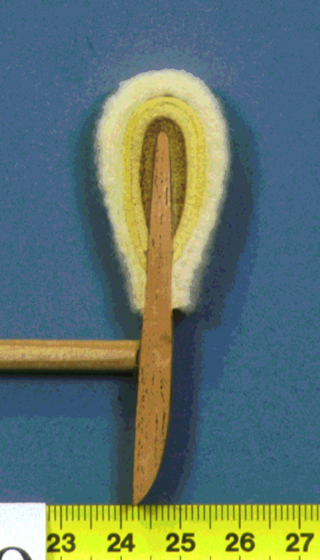 |
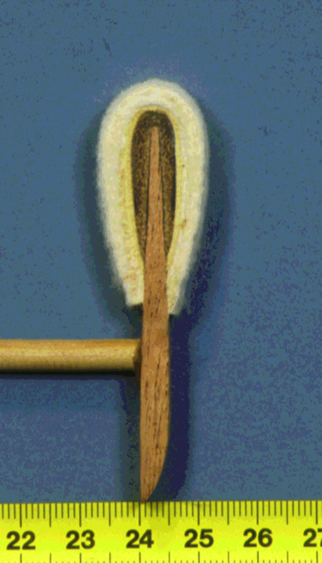 |
Hammer n. 41 |
Hammer n. 49 |
Hammer n. 54 |
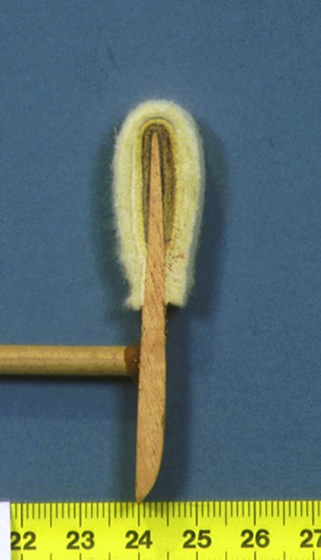 |
||
Hammer n. 65 |
||
As indicated above, F.P. also constructed a second replica set of the original hammers, with felt of a density of about 0.38 g/cm³, which has also been found on Pleyel pianos from the mid-1840s or so, to the 1870s. This was done to provide the Pleyel 10966 with all of the resources necessary for the widest use of this instrument for musical education, interpretation and research. Such use is intended both in relation to the aesthetic themes linked to the Pleyel Romantic typology (a favourite of G. Rossini and F. Chopin, as is well known), and towards an understanding as direct and articulate as possible of the variables of the organological development of the instrument, in relation to the evolution of the touch and piano playing techniques around the years of 1845 to 1850. |
Below on the right, the second set of hammers replicated by F.P., wrapped with felt having a density of approximately 0.38 g cm³, already subjected to a first tuning and running. At the center you can see the first replica of hammers, still unassembled (wrapped with felt having a density of about 0.30 g cm³). On the left there are the mechanical parts replicated (forks and hammer shanks), not yet assembled to the hammers. |
 |
As well as allowing adjustment and verification of the definitive intonation achieved by F.P. on the three hammer sets, these tests indicated a remarkable similarity between the waveforms and cumulative spectral decay of the replica hammers with sheep felt of density of about 0.30 g/cm³, compared to the original hammers with hare, sheep and rabbit felt, but of similar density. This similarity was confirmed by this verification through listening, which provides ‘expert’ qualitative perception that is always crucial and should never be underestimated in such comparisons.
In the summer of 1997, the second replica hammer set was used on the Pleyel 11695 piano (at which time no one even suspected its particular history), which was part of the collection of F.P.. This was on the occasion of the series of three concerts of ‘The Sound Recaptured’, that were held at the Cavour Castle in Santena (Torino, Italy), at which three different pianists played. This was designed specifically to check on the live performance of this hammer set, in terms of the infinite dynamic, timbre and phrasing nuances of the Romantic music.
In this videoclip that was filmed in 2008, F.Ponzi plays the Nocturne op. 62 n. 1 of Frederick Chopin on the Pleyel piano 11695, of which an autograph letter by Rossini of the August 2 1846, certifies the payment by him executed in favor of Camille Pleyel, through the banker Rotschild. |
